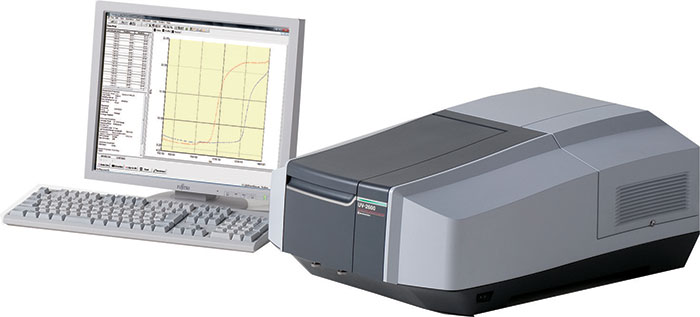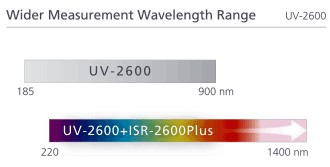UV

Ultraviolet–visible spectroscopy (UV-Vis or UV/Vis) is referred to as absorption spectroscopy in the ultraviolet-visible spectral region. The absorption in the visible range directly affects the perceived color of the chemicals involved. In this region of the electromagnetic spectrum, atoms and molecules undergo electronic transitions. Spectrophotometers were originally developed for the absorption measurement of liquid samples. In recent years, however, high-precision, high-energy spectrophotometers have hit the market due to the rapid increase in reflection and absorption measurements on solid samples, including semiconductors, films, glass, and absorbing materials.
The Shimadzu UV-2600 Spectrometer is a universal, research-grade spectrophotometer that can be used in a wide range of fields, and easily expanded to suit the measurement objective.
By using the optional integrating sphere, the measurement wavelength range of the UV-2600 can be extended to the near-infrared region of 1400 nm.
With the ISR-2600Plus two-detector integrating sphere, the 300 nm to 1100 nm wavelength range of conventional models is extended to 1400 nm.
As a result, the UV-2600 can accommodate measurements of solar cell anti-reflective films and polycrystalline silicon wafers.

